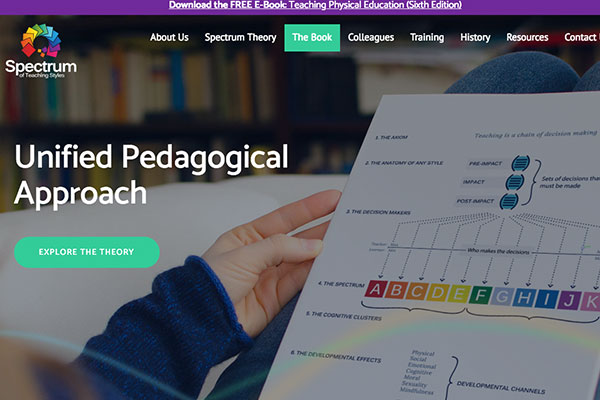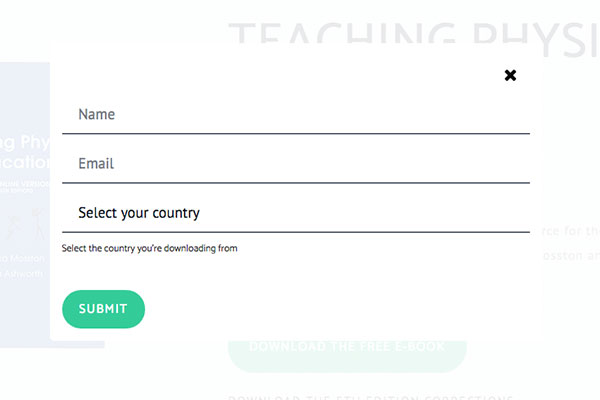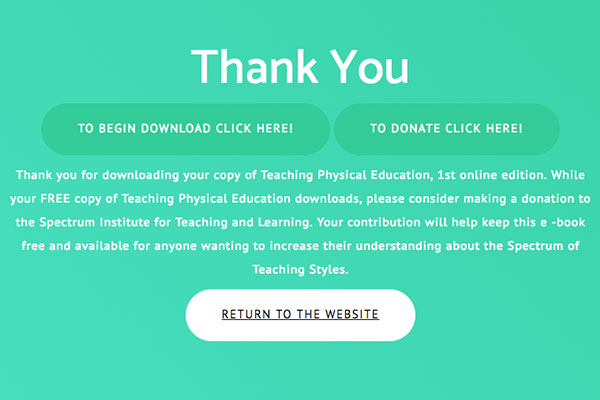What is the Spectrum of Teaching Styles (SOTS) ?
Muska Mosston formulated The Spectrum of Teaching Styles and presented it to the field of physical education in 1966. His theory continues to influence pedagogy because it offers a universal, comprehensive body of knowledge about teaching and learning.
As a summary statement, The Spectrum concepts reinforce the inherent purpose of teaching which is to optimize learning. The Spectrum delineates a range of significantly different teaching and learning options (styles) from Command to Discovery and each style is defined by a specific decision pattern for both the teacher and learner so that specific landmark learning expectations can be experienced and developed.
The Spectrum’s theory, which is based on decision making, delineates landmark teaching and learning options (styles/behaviors). Each successive behavior is derived from the systematic, cumulative shifting of decisions from teacher to learner. The cluster of decisions shifted in each style creates a distinctive set of learning opportunities. Consequently, each teaching style is a landmark decision-relationship that leads both teacher and learner to a specific set of learning objectives and outcomes.
The theoretical progression from one landmark style to another shows the relationships and connections among the multiple teaching styles and the contributions of each style to various educational ideas and programs. The Spectrum does not designate any single behavior as superior to another, nor does it prescribe a linear implementation order. Rather, it offers a range of styles to draw upon according to the objectives that are the focal point of the learning experience. The educational value and contributions of the Spectrum to learners can be achieved when a range of teaching-learning styles are used appropriately.
How Do I Download the FREE E-book?
Downloading the E-Book
Step 1: Navigate to the E-Book Download Page
You can access the E-Book Download page by clicking the "The Book" tab at the top of any page on the website.

Step 2: Enter Contact Info
To download the FREE E-book, click the button entitled "Download the Free E-Book." Enter your name, email and country of residence in the boxes provided.


Step 3: Download
When you have completed entering your contact information, click the "submit" button at the bottom of the page. Once you click the download button your download should start immediately. If not, there is a link on the confirmation page to begin the download. You will be prompted to choose a location to save the pdf file. Once you have chosen a location to save the file, click "Save" and your download will begin.

Step 4: Donate (Optional)
While you FREE copy of "Teaching Physical Education; 1st Online Edition" is downloading, would you consider making a donation to the Spectrum Institute for Teaching and Learning? Your contributions will help keep this and future editions of the book free and available to anyone wanting to increase their understanding of the Spectrum of Teaching Styles.
Step 5: Enjoy your FREE E-Book
Once the file is done downloading you can open the file by navigating to the location where you saved the file and simply double click the file. In order to read the E-book you will need Adobe Reader. You can download Adobe Reader by clicking here.
How Do I Become a Colleague?
The Spectrum Colleagues Page was developed to acknowledge the contributions of the hundreds of professors, teachers, students, and scholars, who have continued to use and expand the theory of the Spectrum. Without our colleagues involvement the Spectrum would be a static theory on the library shelf. Thank you for the life you have given to the Spectrum framework.
If you are a practicing The Spectrum and would like to be considered for inclusion on our colleague page consider completing our 'Become a Colleague' application. The following information will be required:
1. One Color portrait photo
ONE portrait size COLOR photo. The minimum size required is 225px width and 300px height. The picture format can be any of the following (jpg, png, or pdf).
2. Personal-logistical Information
- Full Name
- Title (ex: PhD., EdD, BA. ,etc)
- Location
- Position/Title
- Country
3. Personal Spectrum Story
Please include a SHORT summary explaining how you became involved with the Spectrum. This is not a resume or vitae. Focus on the following questions: When and/or how did you become involved in the Spectrum and why do you remain connected to these ideas?
Thank you for submitting all required information at the same time. Profiles will be reviewed for inclusion. Note subtle changes such as: grammar, spelling, length changes may be made to your comments.
What is The Spectrum Institute for Teaching and Learning?
The Spectrum Institute for Teaching and Learning Is part of the Lankler Family Foundation. A Foundation established under title 501(c)(3) of the Internal Revenue Service code of the United States for nonprofit corporations.
Thanks to the generosity of Alexander (Sandy) Lankler the foundation fully supports the Spectrum Institute for Teaching and Learning.
The Spectrum Institute for Teaching and Learning, a non-profit organization, was created to provide a center for people from around the world to come and work together in a common commitment to improving education and schooling. The central organizing theme undergirding the Institute is to improve pedagogy through the Spectrum of Teaching Styles. The Spectrum Institute serves as a clearinghouse for information and research about alternative teaching and learning styles. These ideas were initially discovered in the early 1960s and have continuously been researched, developed, and implemented in classrooms. The Spectrum has influenced teacher educational programs and institutions worldwide.
Are the Teaching Styles Different from Other Teaching Approaches?
Yes and no. The intent of any teaching behavior is to trigger an intended learning behavior and to develop specific learning outcomes. Therefore, this is the common purpose for all teaching.
The difference is how we understand the structure of teaching and the details comprising each teaching style. Non-spectrum teachers generally have a random view of alternative teaching behaviors. They like some and dislike others. Selection and implementation are based largely on personal preference. This does not mean non-Spectrum teachers are marginal in any way. It simply identifies the approach they use for understanding pedagogy.
Knowledgeable Spectrum teachers have a theoretical, comprehensive, even universal approach to the study and practice of pedagogy. The Spectrum framework offers a map for selecting what you want to accomplish and a network for constructing the intent. Individual personality of the teacher is not the foundational platform. Spectrum teachers generally use more teaching approaches in their lessons and this provides the students with variety and increased developmental opportunities.
Because the Spectrum is a system that embraces a range of teaching-learning options, no one behavior is more valued than another, and each contributes to the missions and goals of education.
Are There Only Eleven Teaching Styles?
No. Many authors have described the Spectrum as 11 ways to teach; however, this is a major misconception. The Spectrum framework is the Structure that delineates teaching -- All teaching events.This does not mean the Spectrum is the only tool one needs to understand, explain, or describe teaching but its decision-making framework is the foundational and unifying principle that is common to all teaching.
The landmark styles serve as significantly different learning opportunities. They are distinct milestones that indicate a significantly different developmental experience. Between each teaching style is a myriad of teaching behaviors that have similar decision structures and objectives as the styles they are between. These options are called canopies and they reinforce, add variety and offer gradual application to the landmark styles.
It is perfectly legitimate for a teacher to use the canopy styles or make modifications to ensure learners success. One of the beauties of the Spectrum is its flexibility and deliberate teaching is the key to a Spectrum teacher.
Can You Use More Than One Teaching Style During a Lesson?
Yes. There is no set formula for the number of episodes a teacher may use in a lesson. It is correct to say that number of episodes in a lesson is NOT the criteria for a good lesson or a good Spectrum teacher. Selecting the teaching styles and number of episodes that reinforce the learning focus determines the best approach.
A skilled teacher can have more than one episode impacting learners at the same time. This takes careful planning and good management skills. This is an important competency for the teacher to master because at times different learners may have different learning objectives within the same content area. Different learners will also have different needs in terms of time and assistance. Therefore, it is educationally sound to use different teaching styles.
Is the Spectrum Only Applicable in Physical Education?
Because the theoretical framework of the Spectrum delineates the structure of teaching, it is appropriate for all subject matters, ages and levels of development.
The Spectrum was developed in the discipline of Physical Education because Dr. Mosston was a Physical Education professor at Rutgers University (USA) when he first authored the work. However, Mosston, Ashworth, and their colleagues knew immediately that the Spectrum of Teaching Styles, both as a theoretical model and as a practical tool, had universal applicability in terms of content, learners, and context.
In 1973-1980 Mosston and Ashworth received a Federal grant that provided them the opportunity to expand and implement the Spectrum in all subject matter fields, all grades, and various ability designations in the public-school classrooms in New Jersey. Additionally, Dr. Ashworth taught the Spectrum to undergraduate and graduates in the Elementary Education Department at Florida Atlantic University for 20 years (1987-2004). Since its inception, the Spectrum has received worldwide recognition and has been translated into more than eight different languages.